|
The Fremont Earthquake
Exhibit and Earthquake Patio
In 1962, the
building known today as the Fremont Community Center was
the original City Hall for the City of Fremont. The
building was built on top of
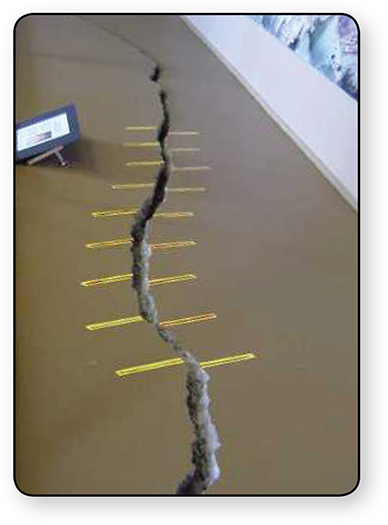 the Hayward Fault, and
shows signs of creep from buckled beams and structural
fractures. In 1972, the first sign of movement was found
as a large crack in the council chamber. Today, the
large crack continues to move. the Hayward Fault, and
shows signs of creep from buckled beams and structural
fractures. In 1972, the first sign of movement was found
as a large crack in the council chamber. Today, the
large crack continues to move.
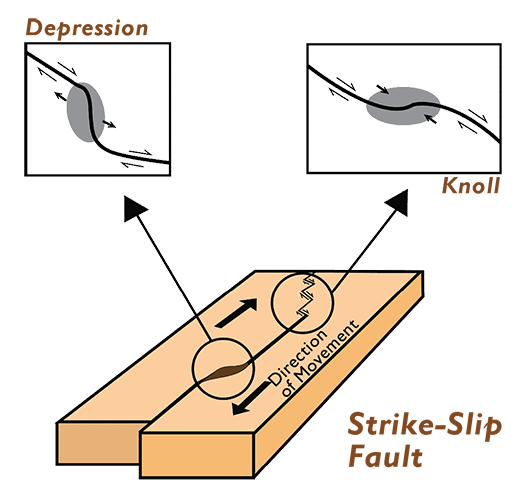 In
Fremont’s Central Park, the movement on the Hayward Fault has
caused cracks in asphalt and concrete. The rate of movement is
around 5 millimeters per year in the Fremont area, which is
enough to visibly move concrete within a few years. The
topography of Fremont’s Central Park was partially created by
the Hayward Fault. Lake Elizabeth, a constructed lake, was a
natural depression caused by movement on the fault. In
Fremont’s Central Park, the movement on the Hayward Fault has
caused cracks in asphalt and concrete. The rate of movement is
around 5 millimeters per year in the Fremont area, which is
enough to visibly move concrete within a few years. The
topography of Fremont’s Central Park was partially created by
the Hayward Fault. Lake Elizabeth, a constructed lake, was a
natural depression caused by movement on the fault.
The side of the building
facing Lake Elizabeth shows several examples of tectonic
movement caused by a strike-slip motion along the Hayward Fault.
A strike-slip fault is when one land mass moves, nearly
horizontally, in the opposite direction of the other on the
surface. The movement on the patio reflects larger land
structures that are forming throughout Central Park. Lake
Elizabeth and Stivers Lagoon (south of lake) are larger depressions, while the hilly areas (north) reflect a
compression. Strike-slip faults show transpressional
compression (knolls) and
transtensional extension
(depressions).
<
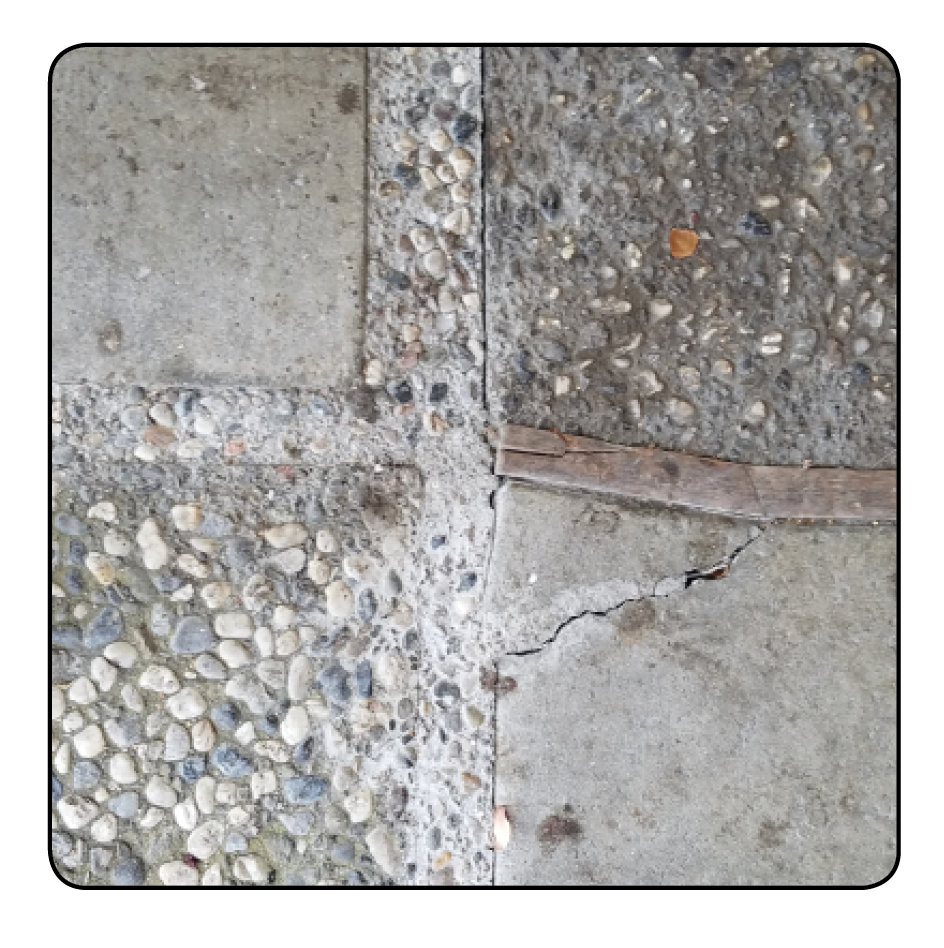 |
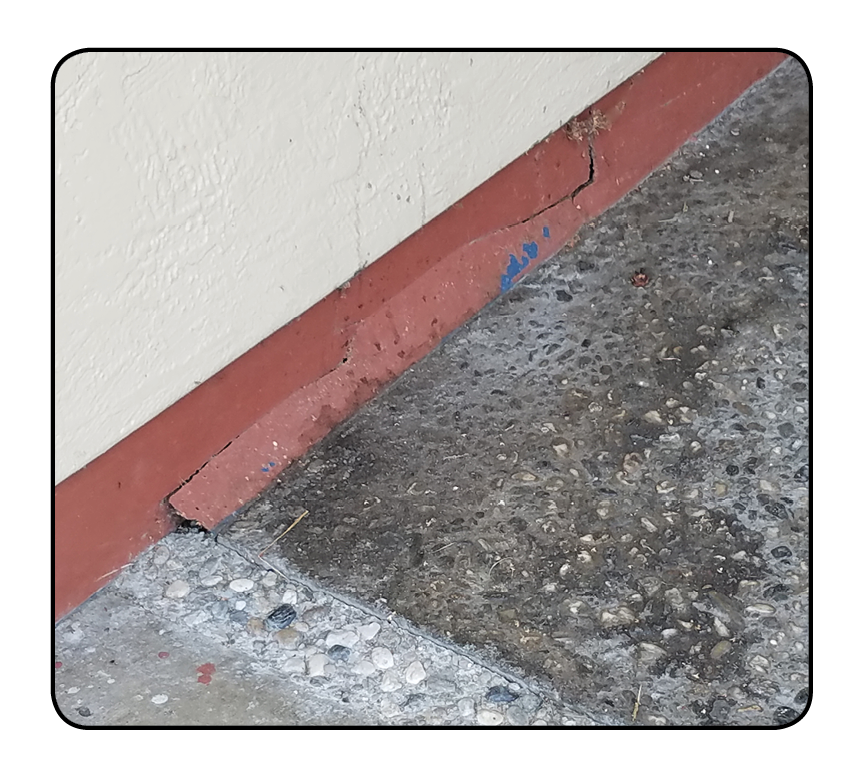 |
|
Wood and concrete react differently to constant fault
creep.
Look at the wood
strips between the concrete and notice the
wood is bending. As the wood bends, the concrete will
crack. |
The inside of the
building shows
evidence of accumulated movement since the building
was constructed in 1962. Outside, the patio has also
slowly shifted as seen in the concrete. |
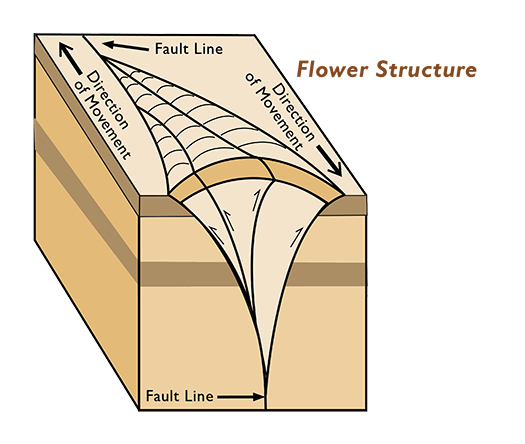 |
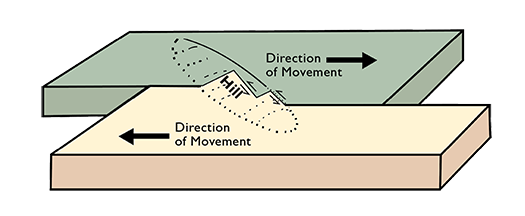 |
|
This knoll was
created by opposite movement along the Hayward Fault
cousing the gground to bend or fold. The bending or folding
action caused land masses to slide past each other
creating a compression ridge over time. |
Central Park has a rolling
topography and depressions. The Knolls are caused
when movement of strike-slip faults pushes the earth
into a small hill. The pressure causes a movement
upward called a positive flower structure. |
WEB
SPONSOR
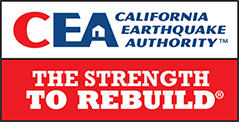
|
The California Earthquake
Authority (CEA) is a not-for-profit, privately funded, publicly managed
organization that provides residential earthquake
insurance and encourages sells Californians to reduce
their risk of earthquake lost. Learn more at
EarthquakeAuthority.com. |
Math/Science Nucleus
4074 Eggers Drive, Fremont, California, U.S.A., 94536
(510) 790-6284
msn@msnucleus.org
|